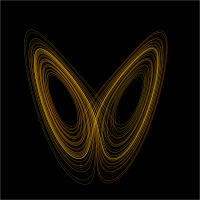Discrete-time dynamical system

A discrete-time dynamical system is like an imaginary friend that follows a specific set of rules. Imagine you have a toy car, and you make it move by pushing it forward. The toy car moves a certain distance each time you push it, and it even changes direction sometimes.
That toy car is like a discrete-time dynamical system. It has a set of rules that determine how it will move forward, how far it will move, and when it will change direction. These rules are usually represented by a formula or equation.
In the math world, these rules are usually written as (Xt+1 = f(Xt)), where Xt is the current state of the system (like the position of the toy car), f is the rule that determines the next state of the system (like the speed and direction of the toy car), and Xt+1 is the next state of the system (like where the toy car ends up after you push it again).
These rules make the system predictable. If you know the current state of the system and the rule that defines how it will change, you can predict what the next state will be. This makes discrete-time dynamical systems really useful for all sorts of things, from predicting weather patterns to understanding the behavior of financial markets.
So that's what a discrete-time dynamical system is, in a nutshell. It's a set of rules that determine how a system will change over time, making it conveniently predictable like a toy car that you can control with your own imagination.
That toy car is like a discrete-time dynamical system. It has a set of rules that determine how it will move forward, how far it will move, and when it will change direction. These rules are usually represented by a formula or equation.
In the math world, these rules are usually written as (Xt+1 = f(Xt)), where Xt is the current state of the system (like the position of the toy car), f is the rule that determines the next state of the system (like the speed and direction of the toy car), and Xt+1 is the next state of the system (like where the toy car ends up after you push it again).
These rules make the system predictable. If you know the current state of the system and the rule that defines how it will change, you can predict what the next state will be. This makes discrete-time dynamical systems really useful for all sorts of things, from predicting weather patterns to understanding the behavior of financial markets.
So that's what a discrete-time dynamical system is, in a nutshell. It's a set of rules that determine how a system will change over time, making it conveniently predictable like a toy car that you can control with your own imagination.
Related topics others have asked about:
Behavioral modeling,
Cognitive model,
Complex dynamics,
Dynamic approach to second language development,
Feedback passivation,
Infinite compositions of analytic functions,
Oscillation,
People in systems and control,
Principle of maximum caliber,
Sharkovskii's theorem,
System dynamics,
Systems theory
